Ansuz Signalz D2 vs C2
“These evocative oriental textures become so sensual, it’s a kind of weaving the sound. It’s so mesmerizing. I can hear every single note and tonal shift clearly, so effortlessly. And now, the power of the music is incredible, the music is burning from the speakers!”
The listening session notes
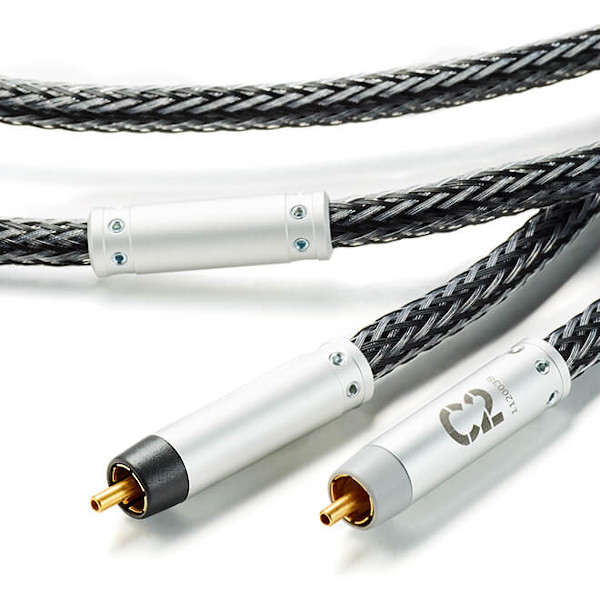
Rethinking what is possible
The design goal of Ansuz Acoustics is to keep inductance as low as possible. The Ansuz interconnects are using three twisted 3 mm coaxial cables (Direct Ground Connection alias DGC), and 2x6 wires twisted in reversed directions to minimize the inductance (Double Inverted Helix Conductors alias DIHC) and two noise suppressing coils (NSC).
Ansuz Signalz C2
The black and grey braid and anodized aluminium connector barrels with grey lettering on the C2 look really hi-tech. The workmanship is first rate, and the cables and flexible and lightweight enough not to encounter any connecting issue. Ansuz uses flexible plastic cuffs on the ends of the RCA cinches that help to secure the connection and make it dustproof. Hollow tube connector pins are gold-plated. An arrow indicates the signal flow as the C2 is directional. The impression is that of quality and good engineering.
The Ansuz Signalz C2 secured my full attention right from the start by deep and firm lows, abundance of energy and first rate resolution. The sound was also exceptionally dynamic and clear. Next months of listening only confirmed the initial observations and added many more. Still, after the time I spent with the C2, its top feature is its penetrating and tight bass that no competitor provides, plus amazing macrodynamics. Contrasts in low level music going to fortes are explosive, movie soundtracks are monumental, and swings from 0 to 85dB on jazz numbers are instant. However, the time when I got completely hooked with the Ansuz C2 came during listening to Rabaud’s Dances of Marouf (Reference Recordings, RR-71 SACD). The SACD version outperforms as easily the CD as the C2 outperformed any other cable I’d had so far. Here’s the quote, word by word, from my listening notes:
“These evocative oriental textures become so sensual, it’s a kind of weaving the sound. It’s so mesmerizing. I can hear every single note and tonal shift clearly, so effortlessly. And now, the power of the music is incredible, the music is burning from the speakers!”
It was not a lifelike experience, actually it went beyond it for the sound was free of disturbances of a live performance. It was like at a premium spot of a hall with all remaining audience being isolated from me by an invisible partition, and enjoying a very exact soundstage.
The imaging was not that of vacuum tubes, with the three-dimensional shimmering palpability created by added harmonics; rather it was like precisely locked events in time-space with crisp contours. The density replaced by clarity. Then you hear the things. The musician that moved before he put the mouthpiece of his English horn to lips. The violinist inhaling a few centimetres above from where the violin sound started to flow a half second later. The triangle sound locatable by micrometres.
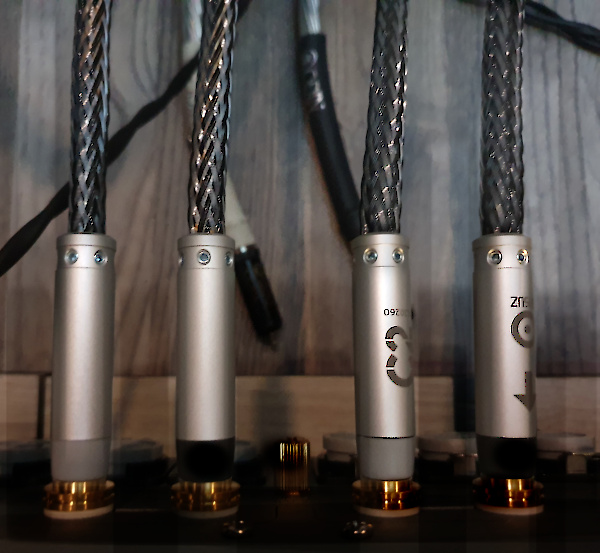
Smetana´s Allegro from Quarter No.2 in D minor (Supraphon, SU 4172-2) is a chamber piece that is incredibly played (kudos to Pavel Haas Quartet for this energetic interpretation) and skilfully recorded. The recording transparency is astounding, you´d probably hear a hair dropped on the floor as a loud “cling”. It was not before the Ansuz Signalz C2 entered my system that I realized how transparent this music could be. Though the imaging had all the aforementioned qualities, it was the C2’s temporal resolution that made the sound acquire a completely new heights of transparency. Timing and rhythm was just extraordinary. It is during such a performance when usual descriptors like ´detail´ or ´air´ cease to exist and the listener can freely walk into the soundstage and spend his or her time with the musicians rather than with the recording.
When Reyna Qotrunnada sang “Teeeemptation…” (Temptation track from Hoerkurs Stereoplay CD distributed free of charge at 2019 High End Munich Show) the voice had almost horn-like cadenza and transparent forwardness. Dixie Chick’s White Trash Wedding kicked off with three a capella voices singing in harmony, each voice perfectly delineated from the other two (Home, Open Wide/Columbia, 509 603 9). Then a banjo, mandolin and bass joint in. There was no thinning of instruments despite all the precision and über-purity that the C2 exhibited, the instruments and voices retained their bodies and harmonics, and they were just heard much more clearly. Do not expect any honey and glue or velvety black backgrounds, the fidelity of the Ansuz C2 is recreated through clarity that could be sweet and caressing you into oblivion, or harsh if a compressed music is played.
If you remove the attractive Q-Sound paraphernalia from Madonna’s Vogue cut (Immaculate Collection (Sire/Warner, 26440) you will be left with the chest-thumping bass line and Madonna’s voice. The bass here is not the 100Hz techno experience, it is the old-school warm low frequency drum that asks for control not to end up bloated. I did not hear any overhang with the C2, what I heard was a unique combination of depth, dryness and bloom that all made the sound seismic through the Ansuz.
On the same album it is good to hear how the recording techniques were developing over 80’s and 90’s. The breakthrough Like a Virgin set up was very sparse with just 6 tracks laid on the tape that supported the organic and cohesive feel that is missed with some later carefully studio-crafted 50+ tracks.
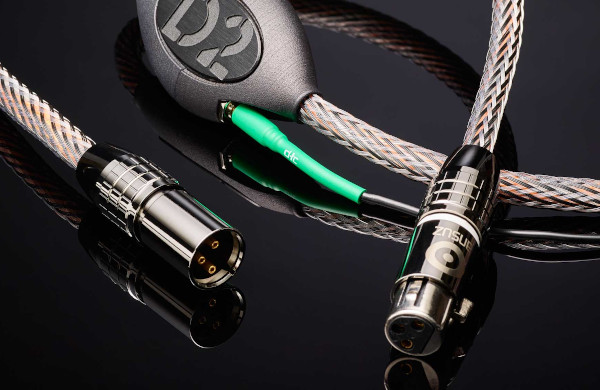
Ansuz Signalz D2
Like the Ansuz Signalz C2 is the Signalz D2 a showpiece of modern technicistic design of interconnects. The black and grey of braid is complemented by translucent copper that gives the cable its depth of colour and premium look. Like the C2 also D2 relies on custom-made connectors that use gold-plated hollow pins, and it is directional. The main difference is a unit that splits the cable approximately in 1:2 and that provides low voltage supply to the cable’s dielectric. The system should improve the sound quality by polarizing the insulation and provide the reference ground for the cables. This happens through an outboard unit, Ansuz Powerbox. The Powerbox is a sizeable black anodized aluminium box that is powered from mains and connects to the Ansuz interconnects and speaker cables via thin conductors that are part of the D2’s packaging. If you do not want to spend your money for turning these interconnects and speaker wires from passive to active operation just don’t do it, the D2 cables will work anyway. Consider the Powerbox an icing on the cake.
The Ansuz Signalz D2 builds its bass in a different way from the C2. It is perhaps not so explosive, it further refines its control over the lows, however. A solo acoustic bass on Stereoplay Bass Sampler as if was closer-miked: you hear more string resonances and the bass is tighter and drier. That’s why the D2 sounds as clean and quick on the very bottom octaves as on the top end. In fact the D2 provides the most informative type of bass I have ever heard from any cable. Read further.
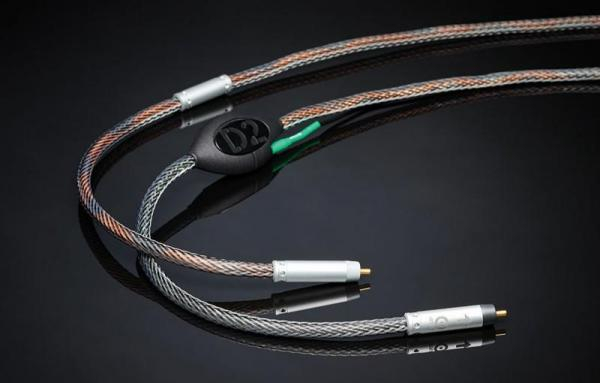
Now, allow me to make a confession. I was disappointed when I inserted the Ansuz D2 interconnects in my system. All the Ansuz C2´s virtues that won me over, that is amazing clarity, seismic bass and unconstrained dynamics – were simply not on a par through the D2. I got back to auditioning the D2 a week later, letting it cook on Blue Horizon ProBurn device in the meanwhile. Then I was there, sitting at my sweetspot and editing another review, when my ears triggered a subconscious alarm. I looked up and was like How does it come that the strings sound so luscious?
It was not the sound but the colour and shape of the violin sound that made me stop writing. Coincidentally just previous Tuesday I attended a string quartet recital in Prague Rudolfinum´s smaller Sukova Hall settings. I was just two meters from the performers, call it a microphone position. The instruments had usual spectacular dynamics and the colourful resonant structures of their bodies sounded so unforced, so natural, yet everything was crisp and almost translucent. And I realized that just five days later I was staring at an invisible string quartet behind the speakers in my own listening room. Was the difference made by the extensive burn-in? Uninvolving yesterday and scary real today? No problem, I still had the Ansuz C2 interconnects on hand so I got down to lengthy comparisons, album by album, track by track. Then another attribute emerged that describes the Signalz D2 the best: sophistication and timbre fidelity.
Through this sophistication the midrange of the D2 had first-rate resolution with natural and vivid tonal colours. Nat King Cole’s vocal on Analogue Productions SACDs had wonderful articulation, with very accurate ‘f’ and ’s’ consonants, accompanying strings were very smooth and silky, and soft touches on piano were sweetly delineated in their quietness. Also my favourite sound – the sound of pink noise from Sheffield Lab’s test disc – had very neutral balance, which means that I could hear no spikes or colorations, and more importantly, the wall of noise was a kind of ‘textured’ from the very low octaves. This texturization ability shone also in the genres that are a polar opposite of Mr. Cole. The drum sequences and synth basslines on Shifting Through The Lens (Front Line Assembly, Mindbase, Wind 165) were warm and tight, penetrating and resolved to the last byte. The sophisticated intricacy also penetrated Fear Factory’s Invisible Wounds (Hatefiles, Roadrunner RR 8398-2) that happened to be mastered by Ted Jensen and George Marino of Sterling Sound. The edge, read aggression, was slightly tuned down and the sound more polished, but it’s only me who listens to such stuff on a high-end system, I guess.
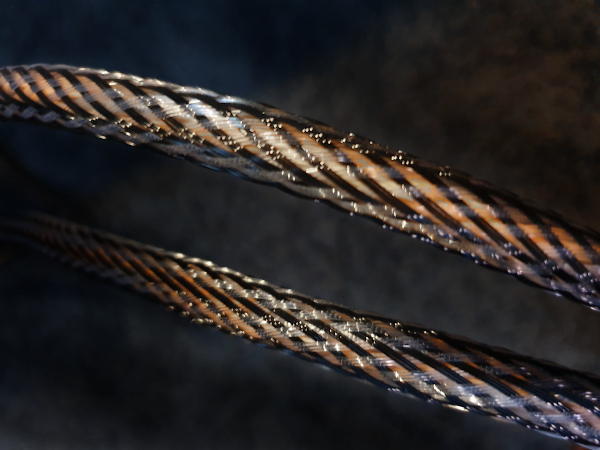
While the Ansuz C2 excelled in macro-dynamics, the D2 bettered it in micro-dynamics. Like in Rachmaninov’s Prince Rostislav poem (Chandos, CHAN 10104, Russian State Symphony Orchestra and Valeri Polyansky). This lyrical piece with undulating strings and evocative horn melody transcended into a majestic cinematographic-like score and the D2 underlined very well the menacing drama with expansive soundstage and muted exchange of strings and winds, both conveyed with microscopic textures. There was a lot of lows that induced earthquake sensations deep in my stomach and the movement ended with a rolling drum and a harp glissando, both delicately “performed” by the Ansuz D2.
The D2 builds wonderful depth of image. You´ve got the sense of the vast recording space in concert halls, and the sense of intimate connection to the performance in a small club or studio settings. The depth does not have the ‘layers’ per se, rather it lets you experience front-to-back continuum in the best turntable fashion. Laterally the imaging is great, its width is a bit less competent than with the best cables I heard. For example, when I listened to Beethoven pieces on Evgeny Kissin’s recordings (RCA Red Seal label) the Steinway grand was stunningly portrayed in the depth perspective, slightly spatially constrained left to right. This subjectively pushed the piano further back in the sound field, as if I was listening from 15th row in a hall which was not the case as these sonatas were digitally recorded in a studio. Yet the piano colours – and I am not talking about piano black - were amazing and close to what I use to hear live. So were the saxophones that I found on Jazz Ambassadors CD. The D2’s presentation was much nuanced with soft delivery of details and a bit reticent sound, yet with very fine colours that bordered a live gig.
I mentioned the Powerbox low voltage supply unit earlier in this review. All the descriptions that I made until now were without the Powerbox engaged. It was time to get it connected.
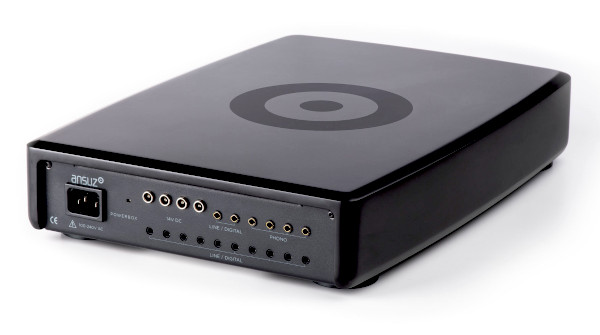
I know, I am expected to rave about how the sound got one level up, the backgrounds became quieter, the dynamics finer and the soundstage bigger. First, it takes time to evaluate the Powerbox’s impact. Switching off and on does not help as the system and cables need some time to distribute and digest the Powerbox “goodness” (sorry that I don´t have any better word for it). However, the change was not as profound as expected, it was rather nuances that made the powerboxed D2s sound a hair smoother and slightly more organized. And that was basically it. It could be that because my whole audio system is powered and reference-grounded through Shunyata Research´s Denali 6000T. Perhaps if I had used the Ansuz´s proprietary Mainz8 distribution block the results might have been different. Next time.
Comparisons
I spent two months by comparing different versions and different lengths of the Ansuz C2 and D2 interconnects with a number of competitors and the bulk of notes from these listening sessions could be published as a decent novel. The seriousness of this job was motivated by a simple goal: I was searching for new reference interconnects for my main audio set-up. It may come as no surprise if I say that out of different models from Tara Labs, AudioQuest, ZenSati and Nordost it was Odin and Valhalla V2 that made it to the finals together with both Ansuz cables.
From my ravings about the C2 and D2 it should be clear by now that it is not that the one is superior and the other inferior. I do not quite comply with Ansuz’s positioning of the C2/D2 in their catalogue as each, on top of obvious Ansuz family similarities, has its own set of virtues and imperfections. And it actually makes sense to compare both to the Nordost’s top models that are a kind of benchmark in the high-end audio. I am not going to serve you the unabridged version of my novel – here are some examples.
In my review of the Valhalla V2 I noted that, in orchestrated music (Exotic Dances from Operas, RR-71 SACD), harp, castanets and flutes stole the sound of the orchestra and horns cut like a knife through it. Previously hardly heard details surfaced with strong presence, but it was always departure from the organic sound and the orchestra disintegrated in just few instruments showing off.
When I swapped the V2 for the Odin the latter was like a grey mouse, the sound lacked the glory of the V2. At least for the first five seconds before it was clear that the Odin is a different league. The Odin sounded very natural and very organic. Unlike the V2 it built the sound from bottom, from a solid bass fundament, it had richer and denser midrange, and clean – though a bit rolled off – highs. The imaginary window into the orchestra was rubbed up and every instrument became perfectly legible still allowing the sound to be very complete and cohesive. The massed strings felt like a real thing, the flute’s voice became caressing instead of overexposed, the harp got integrated. Despite the horns lacked the attractiveness of the V2’s presentation and were less incisive, they were definitely much more balanced and natural.
The Ansuz D2 improves on the Odin with microdynamics and even better resolved midrange. The orchestra as if became a tad quieter and more relaxed. The depth of image was beyond reproach, I swear I could hear the fingers pulling the harp’s strings with soft force modulation, locked in the space with outstanding accuracy. In orchestra’s forte I preferred the Odin – the D2’s bass was better controlled and this resulted in shorter and tighter sound. The very slight smear of the Odin’s bass helped to build the mass and weight so the performance sounded bigger and had more drama in it.
I absolutely loved the crunchiness of metal guitars through the Ansuz D2 (Motorizer, Motörhead, SPV/Steamhammer 91632CD). The guitars had incredibly textured bite with just right amount of distortion and dirtiness. It was totally exceptional rendering of the Runaround Man heaviness. Lemmy Kilmister’s throaty vocals were like a trip of the microphone into his mouth, spitting and nasty.
The Odin illuminated better the initial drum sequence. Music was more homogenous, all the tiny details that I heard with the D2 were less outstanding. The bass guitar was warmer in tone and heavier-handed, the aforementioned crunch of guitars transformed into a rocking and rolling wall of sound, still a very high-end experience.
The Valhalla V2 was the most detailed of the three, slightly etchy and lean nevertheless, and I missed the solid bass fundament of the D2/Odin. The C2 delivered adrenaline-injected sound, heavy and thick, with outstanding macrodynamics and extended top octaves that became a bit fatiguing in the overcompressed mastering of Motorizer.
At one session I tried to eliminate spatial information just to focus on tonal differences of the cables and I reached for Julie London singing Cry Me a River (Analogue Productions, SACD CAPP 122SA). The track is 1955 mono, and it has wonderful acoustic bass and guitar. The Ansuz C2 delivered magnetizing performance with a bit of prominence on guitar around 2’30 mark.
The Valhalla V2 surprisingly exhibited less controlled behaviour and sounded less ‘one piece’, however its upward tilt made the Julie’s voice stunningly articulated and the V2’s imaging abilities let the phantom image hang in the air between the speakers. Unfortunately the guitar became also wirier, so did the double bass that lost some of its body’s size.
With the Odin in place the bass was back in its entirety, yet it was a bit loose and keep ringing a fraction of second longer than with the D2, which preserved the Odin’s composure and added better control of the bottom. In terms of the overall tonal balance the Odin and the D2 were almost identical and both very natural.
With the Valhalla V2 the clarity of sound did not translate successfully into better enjoyment on Have A Cigar (Pink Floyd, Wish You Were Here, SACD AP/PFR 25). The cable made the sound a bit too emotionally distant, almost icy. Gone was the analogue warmth, the recording sounded too digital to my taste, yet the V2created the best soundstage of the three. The C2 was fuller, utterly physical and more ‘there’. The C2 also bettered both the D2 and the Odin in how it established the connection between me and the music. Despite of all its sophistication the D2 was too understated, too polished, but it exhibited the finest textures, and the Odin did not quite manage to control the transients of Roger Waters’ bass in Shine On You Crazy Diamond, although it was the least fatiguing cable of the three.
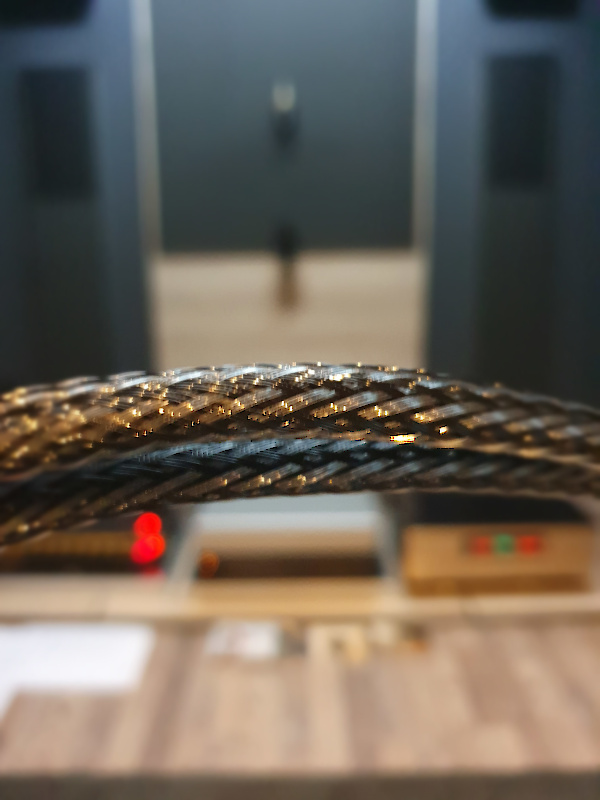
As you can read there was no consensus on which interconnect is the best. Rather it will be very dependent on your system and preferences what to choose. The main message is that the Ansuz cables, in just few years, have catapulted themselves into world’s elite and they should be on the radar of everyone who wants to transform his system from great to remarkable. Well, there is a D-TC Signalz range positioned above the D2 range, including a D-TC Powerbox. It sounds like a challenge, doesn't it?
Contact: RP Audio, Ostrava, +420 737 366 831
Manufacturer's website: https://ansuz-acoustics.com/
Associated components:
- Sources: Accuphase DP-720, SPL Q2048 Mastering Equalizer, McIntosh MCT500 SACD/CD transport + integrated DAC C2600
- Amplifiers: TAD-M2500 MkII, Luxman C-900, Bespoke Audio, McIntosh pre/power C2600/MC611
- Interconnects and speaker cables: Audioquest Redwood, Audioquest Wild, Ansuz Speakz C2, Tellurium Q Ultra Silver, Tellurium Q Silver Diamond, Vovox Sonorus XL, Nordost Valhalla V2, InAkustik Referenz, Nordost Odin, ZenSati #2, Tara Labs The Zero Gold G2
- Loudspeakers: TAD Evolution One E1, Sonus Faber Olympica III
- Power conditioning: Shunyata Research Denali, Nordost Valhalla, Ansuz Mainz C2, Pangea AC-9SEMKII, Roth Audio Orfeo + Roth Audio prototypes, Synergistic Research Atmosphere Level 2, Synergistic Research Euphoria Level 3, AudioQuest Hurricane, Synergistic Research Tranquility Basik



